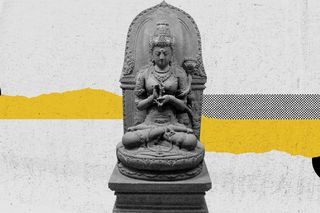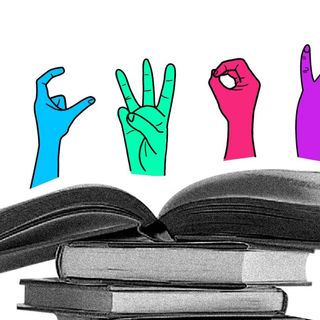
Dutch Museums Promise to Return 100,000 Items Looted From Former Colonies
“If it doesn’t belong to you then you must return it.”

A colonial repatriation committee in the Netherlands recently released a report that advised complete “recognition and rectification of injustices” borne out of colonialism and asked Dutch museums to return artifacts stolen by Dutch colonialists to countries such as Sri Lanka and Indonesia. The Netherlands’ most famous museums — including Amsterdam’s Rijksmuseum and Tropenmuseum — backed the report, vowing to return more than 100,000 exhibits taken by force during colonial times.
“If it doesn’t belong to you then you must return it,” the author of the report, Lilian Gonçalves-Ho Kang You, said. The move follows at least two years of fervent advocacy by Dutch museums to make the repatriation of stolen items a matter of policy in the Netherlands, with the director of the Rijksmuseum, Taco Dibbits, returning many items to Indonesia already in 2019. “It’s a disgrace that the Netherlands is only now turning its attention to the return of the colonial heritage,” he had said at the time. “We should have done it earlier, and there is no excuse.”
Countries in Europe have debated formalizing repatriation operations for several years now, with France and the Netherlands ahead of the curve. French President Emmanuel Macron was one of the first European leaders to diverge from longstanding understandings of museums and heritage when he told a group of University students in Burkina Faso in 2017, “Starting today, and within the next five years, I want to see the conditions put in place so as to allow for the temporary or definitive restitution of African cultural heritage to Africa.” This, of course, was the culmination of almost a decade-long push by African countries such as Egypt and Nigeria asking for their artifacts back from European museums.This proactive practice of restitution has become more common, in recent years, prompting a wave of European nations to return stolen art, instead of waiting around for countries to make demands.
After Macron’s speech, a committee, and a subsequent report was created in France to formalize Macron’s intent, with a clear focus on giving stolen artifacts back to sub-Saharan Africa so the youth in those regions could interact with their own history and culture — with the help of stolen artifacts dating centuries — in their own country. It stated, “to fall under the spell of an object, to be touched by it, moved emotionally by a piece of art in a museum, brought to tears of joy, to admire its forms of ingenuity, to like the artworks’ colors, to take a photo of it, to let oneself be transformed by it: all these experiences — which are also forms of access to knowledge — cannot simply be reserved to the inheritors of an asymmetrical history, to the benefactors of an excess of privilege and mobility.”
Related on The Swaddle:
Works By Female Artists Account for Only 2% of Global Spending at Auctions
This caused a frenzy in other European nations, eager to debate France’s new and surprising position and examine their own standing on the right side of history. Soon after, the Netherlands’ National Museum of World Cultures (NMWC) vowed to return artifacts proactively, by working to actively identify the origins of art within their walls and welcoming claims of ownership by different countries.
India, too, has awakened to the art repatriation debate in recent years, with politician Shashi Tharoor’s speech to the Oxford Union having made waves in 2015. He stopped short of quantifying the repatriation, instead saying, “As far as I am concerned, the ability to acknowledge a wrong that has been done, to simply say sorry, will go a far, far, far longer way than some percentage of GDP in the form of aid.” He added, “we are not talking about reparations as a tool to empower anybody, they are a tool for you to atone.”
Going one step further, External Affairs Minister S Jaishankar put a number to that loot — calling the British share of the stolen art worth US$45 trillion (in today’s monetary value) India’s “humiliation.” Whether to ask for atonement in principle or in actual aid is again a complicated issue to navigate, one rife with issues of ownership, time, and value — quite perfectly exemplified in the Koh-i-Noor diamond. It’s a British crown jewel acquired from India, which politicians have been asking back. But the British took the priceless diamond from Lahore, which is now in Pakistan, so which successor of the British empire gets it returned? The Koh-i-Noor also has a complicated history of ownership, with every new owner (almost all conquerors) having seized it from previous owners. Does the Kohl-i-Noor go back to the last hands it was in before the British seized it, or to the first known possessors of it back in the 12th century? If we’re determining ownership as keepers of the diamond (who seized it from another) at any given time, then wouldn’t the British themselves be in the running?
Critics of repatriation have long advocated for a global, encyclopedic view of ownership of art. “Over time, objects so acquired – whether by purchase, gift or portage – have become part of the museums that have cared for them, and by extension part of the heritage of the nations which house them,” reads a 2002 declaration signed by prominent museums of the world, including the Louvre in Paris and the Metropolitan Museum of Art in New York City. The statement essentially invoked the idea that colonial empires actually served to blur the lines around where one culture began and another ended, essentially making all art and its ownership hybrid, flexible.
Rajvi Desai is The Swaddle's Culture Editor. After graduating from NYU as a Journalism and Politics major, she covered breaking news and politics in New York City, and dabbled in design and entertainment journalism. Back in the homeland, she's interested in tackling beauty, sports, politics and human rights in her gender-focused writing, while also co-managing The Swaddle Team's podcast, Respectfully Disagree.
Related


NCERT Announces Plan to Translate Textbooks Into Sign Language
